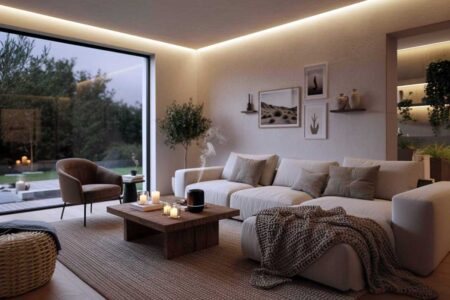When summer hits hard, I reach for fans first. Used the right way, they make rooms feel cooler, cut my AC costs, and help at night when I want fresh air. Used the wrong way, they just push hot air around. Here is exactly how I set mine up, plus when to skip fans for safety. The short version: ceiling fans go counterclockwise in summer, create a cross-breeze with windows, and do not rely on a fan if your indoor temp is around 90°F or higher.
1. Ceiling fan, the right direction and speed
I learned this the hard way one sticky July. My blades were spinning the winter way and the room felt stuffy. In summer, set the fan to counterclockwise so it pushes air down and creates a wind-chill effect. Bump the speed up during hot afternoons, then lower it at night. Fans cool people, not rooms, so I turn them off when I leave.
2. The cross-breeze that actually works
My favorite setup: open two windows on opposite sides of the room. Put a box fan in one window facing out to pull hot air out, and place a second fan inside the room to sweep cooler air across the space toward that window. This “in one side, out the other” trick can drop the stuffy feeling fast, especially in the evening.
3. Night flush, day block
On hot days, I close sun-facing blinds and keep windows shut while the outside is hotter than inside. After sunset, I open up and let the fans move the cooler night air through. It is a simple rhythm that helps me sleep better.
4. Pair a fan with the right helper
- With AC: I run the ceiling fan so I can raise the thermostat a few degrees and still feel comfy. Savings add up.
- With humidity: In muggy weather, a small dehumidifier plus a fan makes the room feel cooler because sweat can evaporate more easily. Research shows fans help most when there is some humidity to move moisture off skin.
- With exhaust: I flip on the bathroom or kitchen exhaust fan to vent hot, moist air while I cook or shower.
5. Quick placement tips I use at home
- Aim a pedestal or tower fan at people, not just the middle of the room.
- In big rooms, two fans beat one: one near a window, one pushing air across seating.
- Tall ceilings, short people problem: I use a downrod so the ceiling fan sits lower and the breeze actually reaches us.
- Keep blades clean, and vacuum the motor housing. Dust kills performance, and you feel it on still days.
6. Safety first, when not to rely on fans
If my indoor temperature is around 90°F or more, I do not count on a fan as my main cooling method. Health agencies say at those temps, fans can make you feel better without lowering core body temperature, which is risky for vulnerable people. That is when I head to AC or a cooling center.
Extreme cases at 104°F and above are a hard no for fan-only cooling.
FAQ
Which way should ceiling fan blades spin in summer?
Counterclockwise, so air moves downward and you feel a cooling breeze.
Do fans actually lower room temperature?
Not by themselves. They move air across skin for a wind-chill effect. I switch them off when I leave the room.
Is a two-fan window setup worth it?
Yes. One fan exhausting out and another sweeping air across the room creates a fast cross-breeze, especially at night.
Saving Your Fan for Best Performance
Regular maintenance helps to guarantee that your fan runs effectively all summer.
- Dust and debris can build up on the blades and motor, therefore lowering the fan’s performance. Use a microfibre cloth to routinely clean the blades; to clean the motor housing, run a hoover using a brush attachment.
- Check the motor: Your fan might require lubricating, whether it is producing unusual sounds or not working as it should. To keep the engine working smoothly, dab some light machine oil on its moving components.
- Check the blades; over time, they may get bent or broken. Please regularly inspect the blades for any signs of wear and replace them if necessary.
In the sweltering summer, fans are a great, energy-efficient method to chill your room. You may maximise the cooling capacity of your ceiling fan by selecting the right one for your room, orienting it properly, and mixing it with other cooling techniques. Your fan may provide dependable comfort all summer long without costly air conditioning with the proper fan price and some maintenance.
Following these guidelines will not only help you stay cool during the blazing heat but also save money on electricity expenses.






